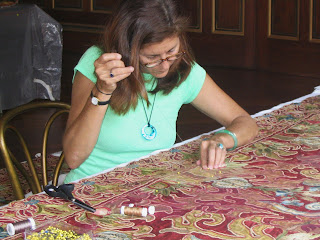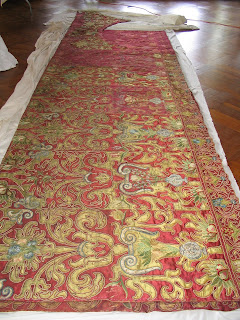Saturday, November 19, 2011 -  Insider theft,Judge Arthur Tompkins,National Army Museum,New Zealand
Insider theft,Judge Arthur Tompkins,National Army Museum,New Zealand
 No comments
No comments
 Insider theft,Judge Arthur Tompkins,National Army Museum,New Zealand
Insider theft,Judge Arthur Tompkins,National Army Museum,New Zealand
 No comments
No comments
New Zealand: Prison Term Begins for Thief of National Army Museum
by Judge Arthur Tompkins, ARCA Blog New Zealand Correspondent
Yesterday, Friday 18 November, in New Zealand one of the more prolific and long-lasting insider thieves in New Zealand’s cultural and military history begins a prison term.
Keith Davies was a serving soldier in the New Zealand army for 30 years and, upon his retirement from active service after an illness in the 1990s, his considerable knowledge of New Zealand’s military history saw him secure a job at New Zealand’s National Army Museum situated in Waiouru, in the centre of New Zealand’s North Island.
He served at the museum from 1995 to 2002, being responsible for, amongst other duties, storage and inventorying the Museum’s medal collection, and corresponding with the families of donors. The collection had been built up over many years, and containing medals and other items donated to the Museum by soldiers and their families. Davies’s seniority and knowledge of the Museum’s systems enabled him to cover his thefts both whilst he was employed at the Museum, and for eight years after he left, by altering records and replacing medals with other similar medals, so as to maintain the illusion that sets of medals had not been broken up.
Overall, he stole 750 medals, sold at least 131 to buyers around the world, and had about 270 still in his possession when he was arrested in Australia earlier this year. Around 350 medals are still missing. One estimate put the value of the stolen medals at of NZ$236,515.00. But the prosecutor said to the Court at sentencing that:
“The greatest effect was on the trust of the people who donated medals and other artefacts to the museum for the benefit of the cultural history of New Zealand.”
 |
| The New Zealand Army Museum, Waiouru. |
Davies was sentenced to three years in prison, and ordered to pay reparation of NZ$50,000 immediately, to be funded by raising finance against a home in Sydney, Australia. Under New Zealand’s parole laws, Davies will serve one year before appearing for the first time before the Parole Board.
The Museum announced that it would continue to search world-wide for the missing medals, saying that pictures of the missing medals would be displayed on the Museum’s website at www.armymuseum.co.nz, although at time of writing the pictures had not yet appeared. Nor, indeed, is there yet any mention on the website of the thefts!
The Museum is, unfortunately, no stranger to the theft of medals – on 2 December 2007 smash and grab burglars stole 96 medals from glass display cases, including 9 Victoria Crosses. On 18 February 2008 all the medals stolen in this raid were recovered, after payment of a reward of NZ$300,000, half of which was itself also recovered – a case-study the writer presented to ARCA’s 2011 Art Crime Conference in Amelia, Italy. It seems possible that investigative work triggered by that theft revealed Davies’s unconnected but earlier crimes.
Judge Arthur Tompkins is a District Court Judge in New Zealand, and teaches Art in War in Italy each year at ARCA’s Postgraduate Certificate Program in International Art Crime and Cultural Heritage Protection Studies.















